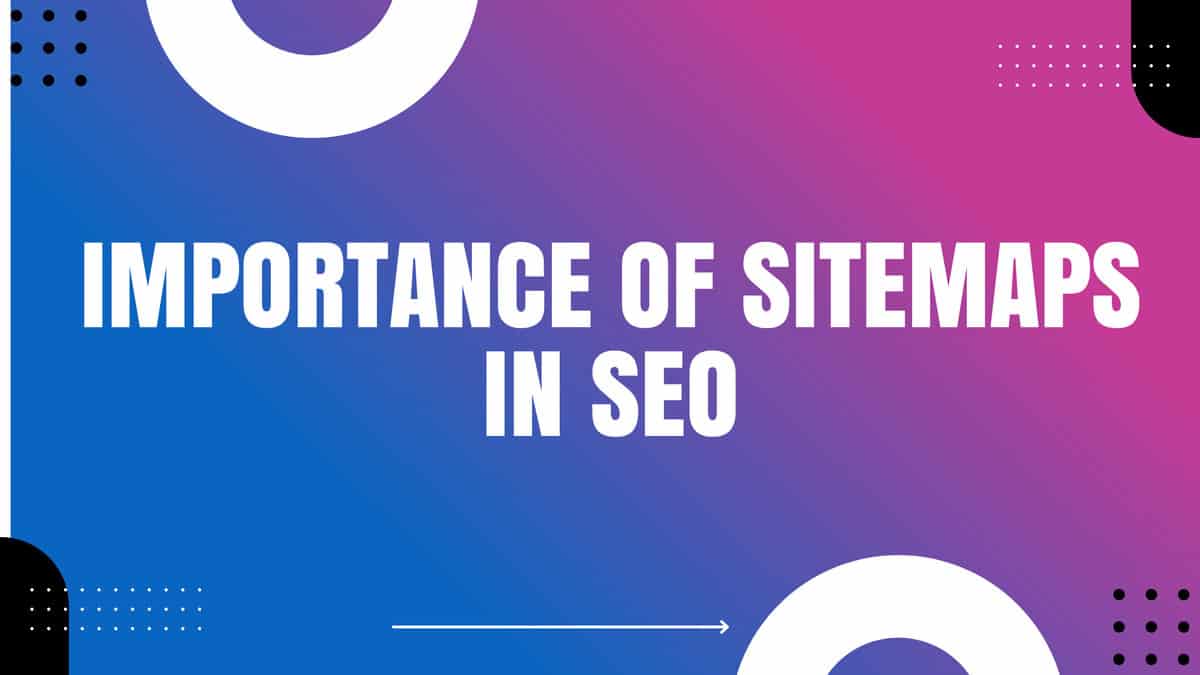Introduction Importance of Sitemaps in SEO
Understanding the significance of Sitemaps in SEO is crucial for the success of your website.
A Sitemap not only helps search engines to index your site effectively, but it also provides valuable information about the structure and organization of your website.
This, in turn, can lead to improved visibility and higher rankings in search engine results.
By including a sitemap, you are ensuring that search engines can easily discover and crawl all the important pages on your website, ultimately enhancing the overall performance and user experience.
Key Takeaways:
- Sitemaps play a crucial role in SEO by helping search engines navigate and index a website more effectively.
- Having a well-organized sitemap can improve a site’s visibility and rankings in search engine results pages (SERPs).
- An XML sitemap provides a roadmap of all the important pages on a website, making it easier for search engine crawlers to discover and prioritize content.
- With a sitemap, even newly added or updated pages can be indexed faster by search engines, leading to improved search visibility.
- A HTML sitemap can also enhance user experience by providing a helpful navigation tool for visitors to easily find the content they are looking for.
- By incorporating a sitemap as part of an SEO strategy, websites can ensure that all their important pages are getting the attention they deserve from search engines.
- Overall, a sitemap is an essential component of an effective SEO strategy to improve a website’s visibility and search rankings.

Table of Contents
Types of Sitemaps
Obviously, the stamps come in different types, each serving a specific purpose in your SEO strategy. Here are the main types of Sitemaps:
- XML Sitemaps
- HTML Sitemaps
- Image Sitemaps
- Video Sitemaps
- News Sitemaps
The When and How to Use HTML Sitemaps for SEO and UX provides more information on using HTML Sitemaps effectively for your website.
XML Sitemaps
XML Sitemaps are used to assist search engines in indexing the pages of your website.
By providing a list of URLs, XML Sitemaps help search engine crawlers discover and understand the structure of your site.
This can lead to better visibility of your content in search engine results.
HTML Sitemaps
HTML Sitemaps are designed for human visitors to your website.
They provide a simple overview of your site’s structure and allow visitors to navigate to different pages easily.
Including an HTML sitemap can improve the user experience on your site and help visitors find the information they’re looking for.
Step-by-Step Guide to Creating a Sitemap
However, creating a sitemap for your website is an important step in improving your SEO. It provides search engine crawlers with a roadmap of your site’s structure, making it easier for them to index your pages.
Here is a step-by-step guide to creating a sitemap.
| Step | Action |
| 1 | Choose the right tools for sitemap creation |
| 2 | Map out your website hierarchy |
| 3 | Use the correct format for your sitemap |
Choosing the Right Tools for Sitemap Creation
When creating a sitemap, it’s important to choose the right tools to help you generate the sitemap automatically.
There are various online tools and plugins available that can help you create a sitemap for your website.
It’s important to choose a tool that can handle the size and complexity of your website and can easily update the sitemap as you make changes to your site.
Mapping out Website Hierarchy
Mapping out your website’s hierarchy involves organizing the pages on your site in a logical structure.
This not only helps search engines understand the relationships between different pages on your website, but it also makes it easier for users to navigate your site.
When mapping out your site hierarchy, consider the most important pages and ensure they are easily accessible from the homepage.
This can help improve the user experience and ultimately, your site’s SEO.
Factors Affecting Sitemap Efficiency
Despite the importance of Sitemaps in SEO, their effectiveness can be affected by several factors.
These factors can impact how search engines crawl and index your website, ultimately influencing your site’s visibility and rankings.
- URL Structure: A well-organized URL structure can help search engines understand the hierarchy of your website and make it easier for them to crawl and index your pages.
- Website Speed: Slow-loading websites can hinder search engines from efficiently crawling your sitemap and indexing your pages.
- Mobile-Friendly Design: With the increasing use of mobile devices, having a mobile-friendly design is crucial for improving the efficiency of your sitemap.
- The Robots.txt File: Your robots.txt file could block search engines from crawling certain pages, affecting the effectiveness of your sitemap.
Assume that optimizing these factors will contribute to the overall efficiency of your sitemap, improving your website’s visibility in search results.
The Importance of Sitemap Regular Updating
Regularly updating your sitemap is crucial for keeping search engines informed about changes in your website’s structure and content.
When you add, remove, or update pages on your site, you need to update your sitemap to ensure that search engines can crawl and index the latest content.
Failing to update your sitemap regularly can result in outdated or missing content in search results, potentially impacting your site’s visibility.
The Impact of Website Size and Complexity on Sitemap Design
The size and complexity of your website can significantly affect the design and effectiveness of your sitemap.
Larger websites with a complex hierarchy may require a more intricate sitemap structure to ensure that all pages are properly indexed.
Conversely, smaller websites may have a simpler sitemap design, but it’s equally important to ensure that all pages are included for efficient crawling and indexing.
Tips and Pros and Cons
After understanding the importance of sitemaps in SEO, it’s important to know how to make the most out of them and also consider the potential drawbacks. Here are some tips and pros and cons to consider.
Top Tips for Improving Sitemap Efficiency
When it comes to improving the efficiency of your sitemap, there are a few key tips you can follow.
First, ensure that all your important URLs are included in the sitemap.
Use descriptive filenames and include your target keywords in the URLs.
Additionally, regularly update and submit your sitemap to search engines.
Lastly, make sure to remove any redirects or errors from the sitemap to ensure smooth functionality.
By following these tips, you can improve the overall efficiency of your sitemap and enhance your SEO efforts.
- Important URLs must be included
- Use descriptive filenames and target keywords
- Regularly update and submit sitemap
- Remove redirects and errors
The result will be a well-organized and effective sitemap, helping search engines better crawl and index your website. The more efficiently your sitemap is structured, the better it is for SEO.
Pros and Cons of Utilizing Sitemaps in SEO
While sitemaps offer numerous benefits for SEO, it’s important to consider both the advantages and disadvantages of utilizing them.
Below is a detailed breakdown of the pros and cons of using sitemaps in SEO.
| Pros | Cons |
| Improved crawlability | Potential for indexing irrelevant pages |
| Enhanced navigation for users | Increased server load |
| Facilitates content organization | Possibility of duplicate content issues |
| Supports website ranking | Difficulties in maintaining sitemap |
By weighing these pros and cons, you can make an informed decision on how to best implement sitemaps for your SEO strategy.
Conclusion: Importance of Sitemaps in SEO
Considering all points, it is clear that sitemaps are an essential component of any successful SEO strategy.
By providing search engines with a clear, organized map of your website’s structure and content, sitemaps make it easier for your site to be indexed and ranked.
Additionally, sitemaps can help ensure that all of your important pages are discovered and crawled by search engines, ultimately boosting your site’s visibility and driving organic traffic.
Without a proper sitemap, you risk losing out on valuable SEO opportunities and hindering your site’s overall performance.
Therefore, it is crucial that you prioritize the creation and maintenance of a sitemap in order to maximize the impact of your SEO efforts.
FAQ
Q: What is the importance of sitemaps in SEO?
A: Sitemaps serve as a roadmap for search engines to effortlessly crawl and index all the pages of a website. They enhance the visibility and accessibility of the site’s content, ultimately improving its SEO performance.
Q: How do sitemaps benefit SEO?
A: Sitemaps contribute to SEO by helping search engines prioritize and understand the structure of a website. They ensure that all relevant pages are indexed and help to identify any potential crawl errors or issues.
Q: Are sitemaps necessary for all websites?
A: While not mandatory, sitemaps are highly recommended for all websites, especially those that are large or have complex structures. They are particularly beneficial for new websites, as they aid in establishing a strong online presence from the start.
Q: What are the different types of sitemaps?
A: There are primarily two types of sitemaps: XML sitemaps, which are designed for search engines, and HTML sitemaps, which are created for website visitors. Both types play a crucial role in optimizing a website for search engines and user experience.
Q: How frequently should sitemaps be updated?
A: Sitemaps should be regularly updated whenever new content is added to the website or existing content is modified. This ensures that search engines are aware of the latest changes and can accurately index the website’s pages.
Q: Can sitemaps improve a website’s ranking in search results?
A: While sitemaps alone do not directly impact a website’s ranking, they do contribute to the overall SEO strategy by ensuring that all relevant pages are crawled and indexed. This can indirectly lead to improved search engine visibility and potentially higher rankings.
Q: How can I create and submit a sitemap for my website?
A: There are various tools and platforms available for generating XML sitemaps, such as Yoast SEO for WordPress websites or online sitemap generators. Once created, the sitemap can be submitted to search engines via Google Search Console or Bing Webmaster Tools for indexing.




